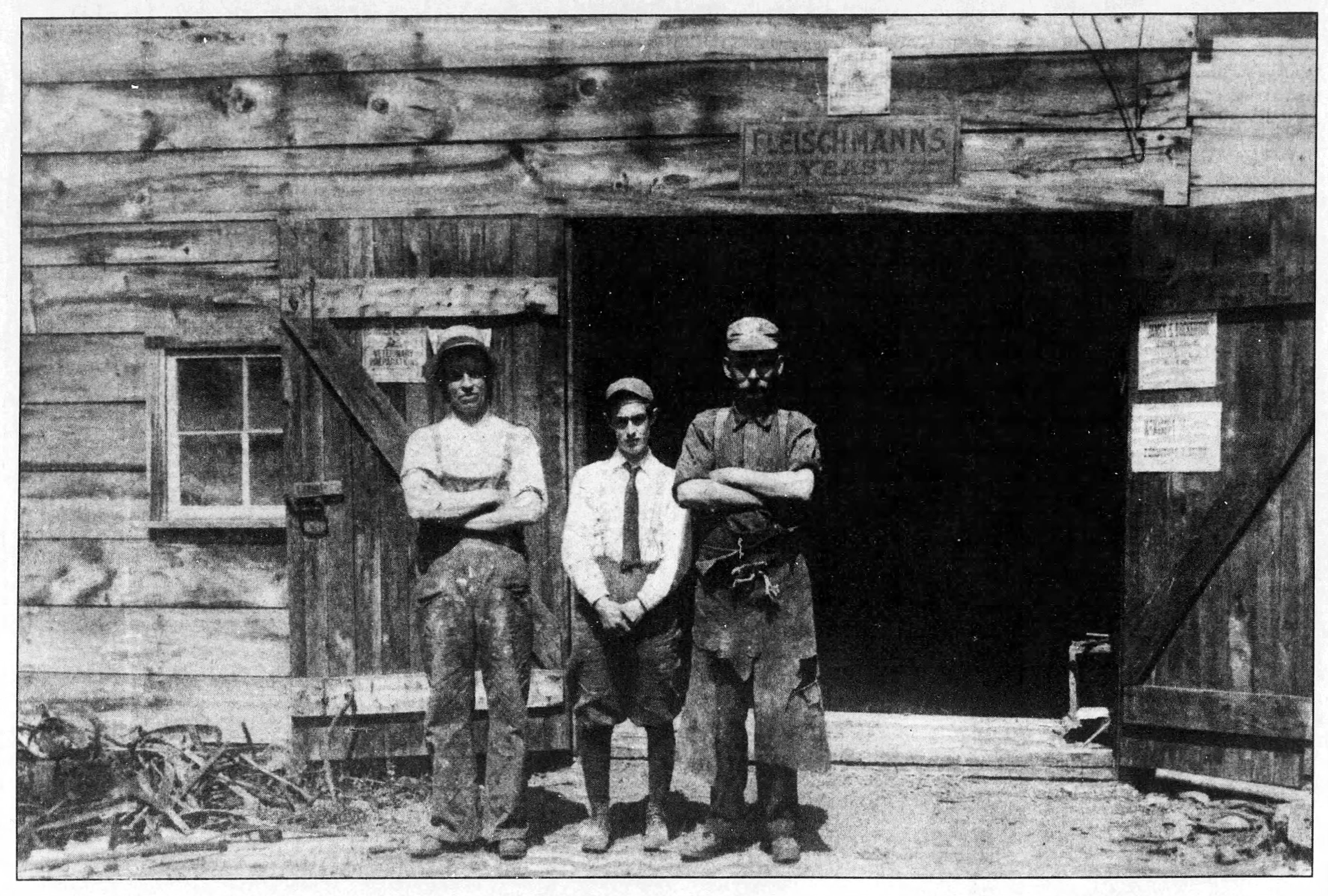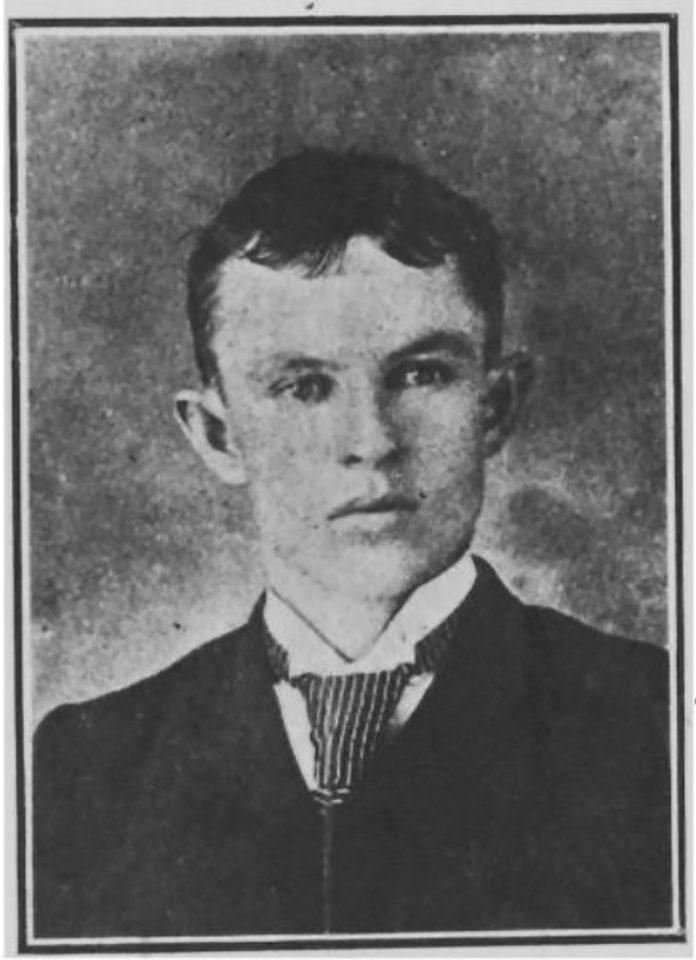Blacksmith, community-minded citizen and fire chief instrumental in building the neighbourhood
By Dave Allston
When Patrick Mears first arrived in Westboro in 1903, the village was barely on the map. The name Westboro was only four years old, the population was under 200, and the village was largely comprised of farms and the old mill property.
Westboro’s growth would explode over the next decade, with the population up to 750 by 1908 and over 1,400 by 1913.
Leading the way in building Westboro was a handful of engaged citizens. Some came to the village to live away from the busy city, others came to build their own home lured by cheap land and accessible building materials, while others came to take advantage of the opportunity for commercial enterprise on the busy Richmond Road. Patrick Mears fit into the third category.
Deserving of a nickname like “Westboro’s Mr. Everything”, Patrick “Paddy” Mears came to Westboro by way of Richmond where his Irish family had long resided. He had moved to Thurso, Quebec, in his early 20s, where he met his wife and started his family. By the time he and his wife Julia Ann arrived in Westboro he was 37 years old and the father of five children between the ages of 3 and 9.
He must have seen the potential in the small blip on the map when he rented an old brick building that fronted Richmond Road at the corner of Winston (then known as William), on the spot where the Baker Street Café stands today. That old building, which dated back to the 1870s, had an interesting history of its own, having functioned as a tavern and traveler’s hotel for nearly two decades in the true “wild west” days of Nepean.. The hotel was later converted by its owner William Curran into a duplex residence, but when Mears moved in, he had it modified back to a single-family house to accommodate his large family.

- An ad for a blacksmith from Patrick Mears, placed in the Thursday, November 13, 1913 edition of The Ottawa Citizen.
At the rear of the property (where 393 Winston stands today), Mears established a blacksmith shop and a wagon shop. Once old enough, his son Wilfred joined him in the business, as did William Pack, another resident of Westboro.

Aside from his successful blacksmith business (“Westboro’s most proficient and largest blacksmithing and horse shoeing establishment”, so noted the 1913 “Ottawa’s Westmount” promotional booklet issued by the village), Mears also had a lucrative business selling poultry, dairy and general farm produce.
For the 27 years Mears spent in Westboro, he became one of its most well-respected community-minded citizens. He was elected in 1907 as one of the three school trustees for the village, serving two three-year terms. Mears would have been part of the trustee board that oversaw the construction of the original Churchill Public School in 1910 (demolished in 1991).
Mears was also heavily involved in advancing recreation and sports facilities in the west end. In December 1911, Mears was a key player in a group of west end men who formed the Carleton County Hockey League, which featured teams competing from many Ottawa’s suburbs, including Westboro, Britannia, Ottawa South, Ottawa East and Eastview. Mears acted as vice-president of the league.
For several years he operated an open-air skating and hockey rink on Richmond Road just east of Churchill, and in 1913 began exploring the possibility of constructing an enclosed arena, He had the support of the community and some financial backing, but the estimated $8,000 cost was likely too high. Westboro would have to wait a few decades for their arena.
In 1913, he helped form the Westboro Athletic Association, serving as first vice-president. He also joined the board of the Westboro Baseball Club, which was a charter member of the competitive and extremely popular Britannia Line league.
When Westboro’s first volunteer fire brigade was formed in September of 1913, Mears was appointed its first chief. The brigade had primitive equipment in its earliest days, and so campaigned the township and county councils for improvements. Tragically, and ironically, one of Westboro’s worst fires of the era would affect the Mears family directly.
In the early morning hours of May 15, 1916, fire destroyed a block of buildings on Richmond Road east of Winston. One of the buildings was owned by butcher Frank O’Malley, but the majority were owned by Mears. Lost was the old brick hotel, a “pressing” business in behind, and all of the sheds and shops for Mears’ business. High winds briefly threatened the entire village, but thankfully the fire was eventually contained after two hours.
This fire helped demonstrate the urgent need for improved firefighting equipment for the village, and was the harbinger for finally receiving better facilities, including a small station and a fire bell installed in the town hall.
After the fire, Mears acquired the double opposite his property (394-396 Winston) and moved in. Financially devastated by the fire, records indicate Mears did not return to blacksmithing work. It was a dying trade and Mears was now in his fifties. He performed some light farming and gardening work (he kept sheep and hens on the burnt property as well as large numbers of bees), and participated in groups such as the Catholic Order of Foresters and the Knights of Columbus. He was also a dedicated church attendee at St. George’s Parish.
Patrick Mears passed away suddenly in 1930 of a heart attack. The home at 394-396 Winston remained in the family through his daughter Mary Loretta and her husband Charles Surtees until 1994. The large lot which had been burnt out did not get built on again until the mid-1930s. Following Patrick’s death, the lot was sold and Robinson’s Groceteria was built, with a grand opening on September 12, 1935. This building still exists today, extensively remodeled to be the Royal Canadian Legion.
The impact Patrick Mears and other citizens like him had in the early days of Westboro should never go unforgotten, as their hard work and dedication helped build up the little village to become the thriving neighbourhood that it became and continues to be today.
